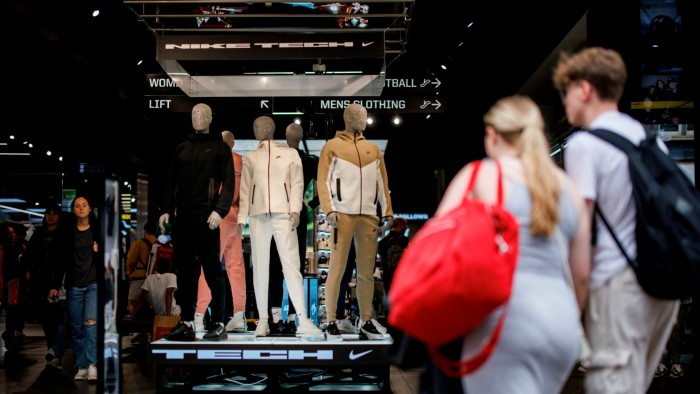Stay informed with free updates
Simply sign up to the UK inflation myFT Digest — delivered directly to your inbox.
UK inflation unexpectedly fell to 2.8 per cent in February, in a boost to chancellor Rachel Reeves as she prepares to deliver a high-stakes Spring Statement.
The annual increase in consumer prices, reported by the Office for National Statistics on Wednesday, was below the 2.9 per cent forecast by economists polled by Reuters and the 10-month high of 3 per cent recorded in January.
The decline was driven by a fall in clothing prices, which dropped 0.6 per cent in the 12 months to February, marking the first contraction since October 2021.
However, services inflation, a key measure of underlying price pressures for rate-setters, held at 5 per cent in February, according to the ONS. Economists had predicted a decline to 4.9 per cent.
Joe Nellis, economic adviser at accountancy firm MHA, said the drop in headline inflation was “a welcome surprise for the government ahead of the Spring Statement, yet it is unlikely to undo the shift towards caution in the rate-cutting strategy of the Bank of England that has taken place in recent months”.
The figure comes as Reeves is set to outline more than £10bn of spending cuts in an attempt to repair a hole in the public finances caused by anaemic growth and higher borrowing costs.
Commenting on the inflation data, Darren Jones, chief secretary to the Treasury, said: “Our number one mission is kick-starting growth to raise living standards for working people, that is why we are protecting working people’s payslips from higher taxes.”
Traders are currently putting a roughly 50/50 chance of a quarter-point interest rate cut at the BoE’s May meeting, according to levels implied by swaps markets, up slightly from before the data.
Persistent price pressures have prompted the BoE to take a “gradual” approach to cutting interest rates despite lacklustre growth. Last week, it held rates at 4.5 per cent.
The BoE expects inflation to rise to 3.7 per cent in the third quarter, primarily because of higher energy prices, before slipping back to about 2.5 per cent during 2026, and reaching its 2 per cent target in 2027. However, earlier in the month, it warned it would “pay close attention to any consequent signs of more lasting inflationary pressures”.
February’s dip in headline inflation was “the calm before the storm,” according to Rob Wood, chief UK economist at Pantheon Macroeconomics.
He said the increase in the national living wage and employer’s National Insurance contribution announced in the October Budget and taking effect from April 1, together with the energy price cap rising next month, would be likely to boost the headline inflation figure to 3.5 per cent in April and then to a peak of 3.7 per cent in September.
Wood expects the BoE to cut interest rates twice more in 2025, but he said the “persistence of underlying inflation” was raising the likelihood of only one more cut this year.
“The wild card, however, is President Trump. The April 2 tariff day could crystallise downside risks to the global economy that keep the MPC wanting to ease policy,” he said.





